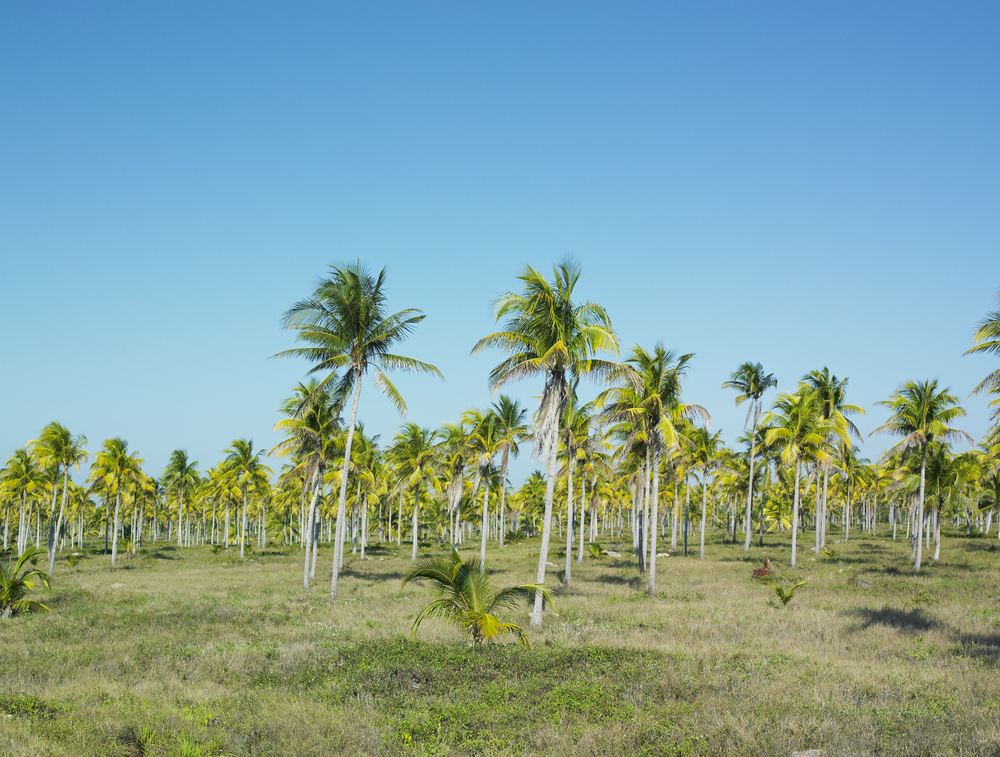Desembarco del Granma Overview
Desembarco del Granma National Park, known in Spanish as Parque Nacional Desembarco del Granma, is located in southeastern Cuba, in Granma Province.
Covering approximately 132 square miles (342 square kilometers), the park is a UNESCO World Heritage Site recognized for its dramatic coastal cliffs, unique karst landscapes, and historical significance.
It is named after the yacht Granma, which carried Fidel Castro and other revolutionaries to Cuba in 1956, marking the beginning of the Cuban Revolution. The park extends along the Gulf of Guacanayabo and features some of the most impressive limestone terraces and sea cliffs in the Caribbean, making it a remarkable natural and cultural destination.
The terrain of the park is defined by its striking limestone formations, particularly the elevated marine terraces that create a staircase-like pattern along the coast. These terraces, formed over millions of years through tectonic activity and sea-level fluctuations, are among the best-preserved examples of their kind in the world.
Some cliffs drop steeply into the turquoise waters of the Caribbean Sea, offering breathtaking views of the coastline. Inland, the park features canyons, caves, and sinkholes, adding to its geological richness. The vegetation is dominated by dry tropical forests, with species adapted to the rocky and arid environment. The flora includes endemic plants such as the Cuban mahogany, guayacán trees, and various species of cacti that thrive in the dry, sun-drenched landscape.
Desembarco del Granma National Park is home to a rich variety of wildlife, with many species endemic to Cuba. Among the mammals, visitors might spot the Cuban hutia, a large rodent native to the island, and the small, elusive almiquí, or Cuban solenodon, which is a rare insectivorous mammal.
The park is particularly notable for its diverse birdlife, including the Cuban trogon, which is Cuba’s national bird, as well as the Cuban parrot and the bee hummingbird, the smallest bird in the world. The coastal areas and mangrove ecosystems support a variety of marine and bird species, making the park an excellent destination for birdwatchers and nature enthusiasts.
One of the most popular features of the park is the dramatic Cabo Cruz cliffs, where towering limestone walls plunge into the sea. This area offers spectacular coastal views and is one of the park’s most photographed sites.
The Cueva de Fustete is another significant feature, a cave system with ancient rock formations and evidence of early human habitation. The park also has a historic lighthouse, the Faro de Cabo Cruz, which has guided ships along the Cuban coast for more than a century and remains an iconic landmark.
Visitors to Desembarco del Granma National Park can engage in various activities that allow them to explore its natural beauty. Hiking trails lead through the terraces and forests, providing stunning vistas and opportunities to observe wildlife.
Guided tours are available to educate visitors on the park’s geological and historical significance. The park’s coastline is also ideal for snorkeling and diving, offering a chance to explore marine ecosystems teeming with fish and coral. Photography and birdwatching are particularly rewarding, given the park’s rich biodiversity and striking landscapes.
Conservation efforts in Desembarco del Granma National Park focus on preserving its delicate limestone formations and protecting endemic wildlife. The park’s status as a UNESCO World Heritage Site has helped secure funding and international recognition for conservation initiatives.
However, challenges such as climate change, illegal hunting, and deforestation in surrounding areas pose threats to its ecosystems. Park management works to mitigate these issues through strict regulations, conservation programs, and community involvement, ensuring that this unique and historically significant park remains protected for future generations.










































































